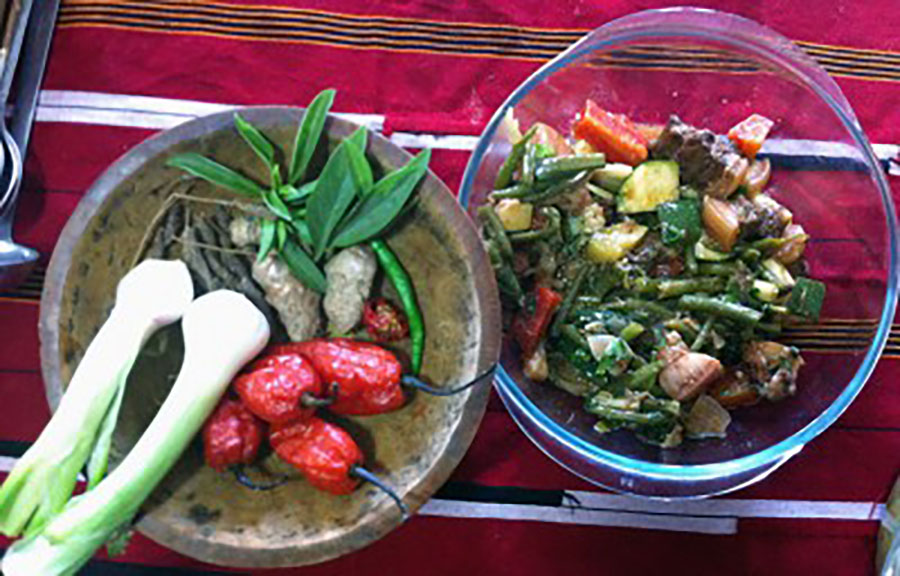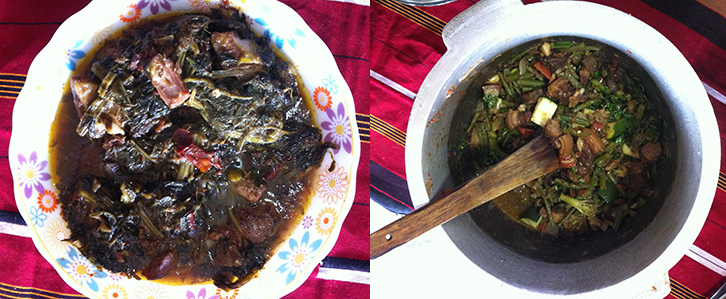
Food is a big deal for people in the Northeast. And since I grew up in Manipur, my memory of food is centered around the people and place of that state -- my home. Though my family hails from Uttaranchal, I was born and brought up in Manipur. And over the years, I have imbibed everything that the place offers, food, of course, and the sense of belonging here comes naturally.
It was my father who visited the northeast from Uttaranchal at the age of 22 back in the 1950s. Working for an organisation for the social empowerment of women and the people in rural India, my father was drawn to Manipur, the love and warmth of the locals and decided to stay there.
When Manipur became our “home”, its rich culture and the unique local food also became an integral part of our lives. Drawn to Manipuri food -- its rich flavours; simple but supreme quality of preparation with leafy vegetables (many of them unavailable in other parts of the country); the high spice quotient; the aromatic herbs grown locally -- the comfort that the food provided allowed me to feel immense security even years after I had moved out. I also realised the power of food in that it allowed me to bond much better with friends when I introduced them to Manipuri food. Ah, so they’d ask me about the aroma of mayang-ton (lemon basil), or they’d clamour to find out Singju, this awesome salad prepared with finely chopped banana stem, laphu tharo (banana flower), cabbage, lotus stem, komprek (a kind of scented herb), kollamni (a local herb), tree beans, coriander leaves, ginger and lots of seasonal vegetables seasoned with red chilli flakes, roasted sesame powder and roasted chick pea powder.
And how can I forget the slurping sounds of my friends as they greedily sipped kiangsoi, a warm stew of any seasonal vegetables with coarsely chopped onions or spring onion.... Soupy in consistency, traditionally eaten with rice, these precious food moments were my chance to remember just how life in Manipur invariably revolved around food. Local harvest festivals welcoming the arrival of new crop meant a community culinary adventure with everyone pitching in for home cooked food. I realised that relationships became intense and strong -- just like the flavours of the local food -- through these culinary adventures. The sight of local herbs and vegetables growing in kitchen gardens of Manipuri homes, of the locals even rearing fish in small ponds around their respective homes; the charm of having the seasonal vegetables that no one else in the country could experience, the aromas of the herbs gently lifting the tastebuds and the senses continues having the power to transport me back to my childhood days.

Now, after spending decades in New Delhi, another melting pot with culinary flavours bursting from everywhere, I still realise that what I grew up experiencing in terms of food was valuable, pure and so healthy. No wonder then that research is pointing toward Manipuri food being regarded as one of the finest, healthiest cuisines in the world. Ah, how can I ever overcome the flavour of bamboo shoots, the fermented smoked and dried fish, the innumerable leafy green vegetables and varieties of different herbs and spices to flavour the dishes?

So, how should you cook local cuisine while being in another land altogether? Here’s what I do. While I follow the traditional method of cooking the recipe, I change and play around with ingredients. Back home, Kiangsoi, for instance, is cooked with whatever is locally available -- mustard leaves with more than just a hint of ginger and garlic and some dry fish. Or, it could be a symphony of beans, cauliflowers and potatoes. In Delhi, I use French beans, zucchini, broccoli, carrots and asparagus. I use chicken pieces instead of fish to accentuate the flavours because it is healthy and goes equally well with steamed rice. The best part? Most of Manipuri food involves zero-oil cooking. For kiangsoi, I take the chicken, cut it into medium-sized pieces and pressure cooker it. Separately, I add chopped ginger, garlic, tomatoes and let it cook in -- no, not oil -- water. I add veggies and chicken in this broth and season it well before serving. Ditto with kanghou (fried vegetables) where I make use of vegetables easily available in city and follow the traditional style of cooking the dish. I make it a point to include champhut in my day to day meals – essentially vegetables boiled sans salt or spices, which is an accompaniment to other dishes. This is a part of every meal in Manipur since it is bland and neutralises the spices in other dishes.
Any surprise then, my friends in the metro love my preparations. It’s simple; any food prepared with dollops of love will be a hit and Manipuri people, with their warmth, achieve just that.

